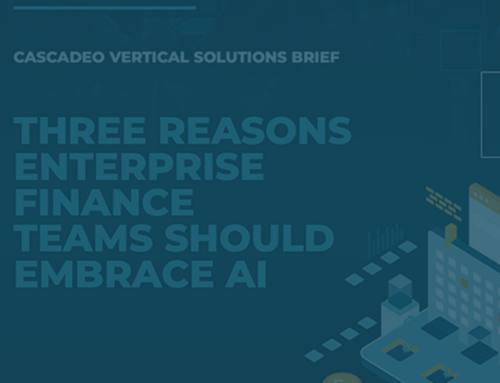
The basic goals of streamlining, simplifying, and accelerating information production apply particularly well in an industry dedicated to broadening access to communication channels and tools.
Every Facet of Telecom Operations Can Benefit From a Strategic Gen AI Implementation
 It only makes sense that an industry focused on communications would be an early adopter of a technology featuring large language models. The basic goals of streamlining, simplifying, and accelerating information production apply particularly well in an industry dedicated to broadening access to communication channels and tools.
It only makes sense that an industry focused on communications would be an early adopter of a technology featuring large language models. The basic goals of streamlining, simplifying, and accelerating information production apply particularly well in an industry dedicated to broadening access to communication channels and tools.
Generative AI is making an immediate impact on customer service across the telecom industry. Dramatically improved chatbots, service portals, and billing interfaces are already at play, as they draw directly on the core capacities of LLMs. Generative AI is also expanding access to customer service via instant, multilingual translation functions that invite non-native speakers in a given service area into full engagement with your automated tools, improving customer experience and increasing engagement. It can also be employed to boost accessibility to customers with disabilities, dramatically improving customer experience for this often-neglected population segment.
Gen AI also offers the opportunity to know your customers better, via sophisticated analysis tools that provide insights from every customer interaction. This allows telecom companies to custom-tailor service suggestions and personalize bundles, promotions, and price points. It also improves churn predictions, providing essential information for retention campaigns, and can assist in fraud detection and prediction based on patterns of customer behavior and automated billing analysis.
Field service, which makes up 60 to 70% of telecom operating budgets, may be the biggest opportunity for generative AI to impact telecom companies. AI tools can streamline field diagnostic and repair work considerably, eliminating the need for remote support to solve complex issues and, in turn, reducing time spent on maintenance, installation, and service restoration during costly outages. Gen AI can also be used to streamline basic labor functions like scheduling, route planning, and on-site communications. This produces a three-way benefit of reduced labor expenses and improved employee and customer experiences. Gen AI can be used to prevent field service needs as well, using data analytics to forecast demand surges and improve spectrum, infrastructure, coverage planning, keeping networks fully operational and optimized.
In the office, AI supported business intelligence can accelerate and enhance predictive modeling to strengthen sales and strategic planning, increase productivity by automating routine reporting and research tasks, and improve security and governance by analyzing systems and producing compliance reporting that keeps you in line with the myriad, sometimes geographically specific, regulations across the many facets of a complex industry.
IT operations are another area where AI is already modernizing functions across industries. Infrastructure management is leading gen AI development, with functions like AI-augmented support processes to accelerate and streamline event responses, enhanced observability via AI-generated summaries and reporting, automated inventory and access analysis to enhance security and governance, and the ability to process unprecedented quantities of data. Insights from that data can be delivered nearly instantaneously, heightening your predictive analytics capacity and keeping your operations resilient and optimized, which in turn lowers your TOC across operating environments.
It’s no secret that generative AI has already changed product development and delivery across many industries, as well. The processes of building and maintaining a wide range of apps, parsing customer data to meet market demand with new products and services, and providing tech support have all been substantially altered in a short period of time. In industries like traditional telecommunications services, where market saturation is high and innovation is key to future profitability, generative AI adoption represents an opening into new ideas and opportunities. While development talent is becoming more broadly democratized by this shift, building expertise in AI strategy and implementation or partnering with vendors who bring experience to the table should be an essential initiative, as these skills are in high demand.
As always, emerging technology as new as generative AI is difficult to predict. But as many telecommunications companies refashion themselves into tech companies to embrace a fast-evolving future, tracking the opportunities presented by generative AI will be both a necessity and a challenge.




